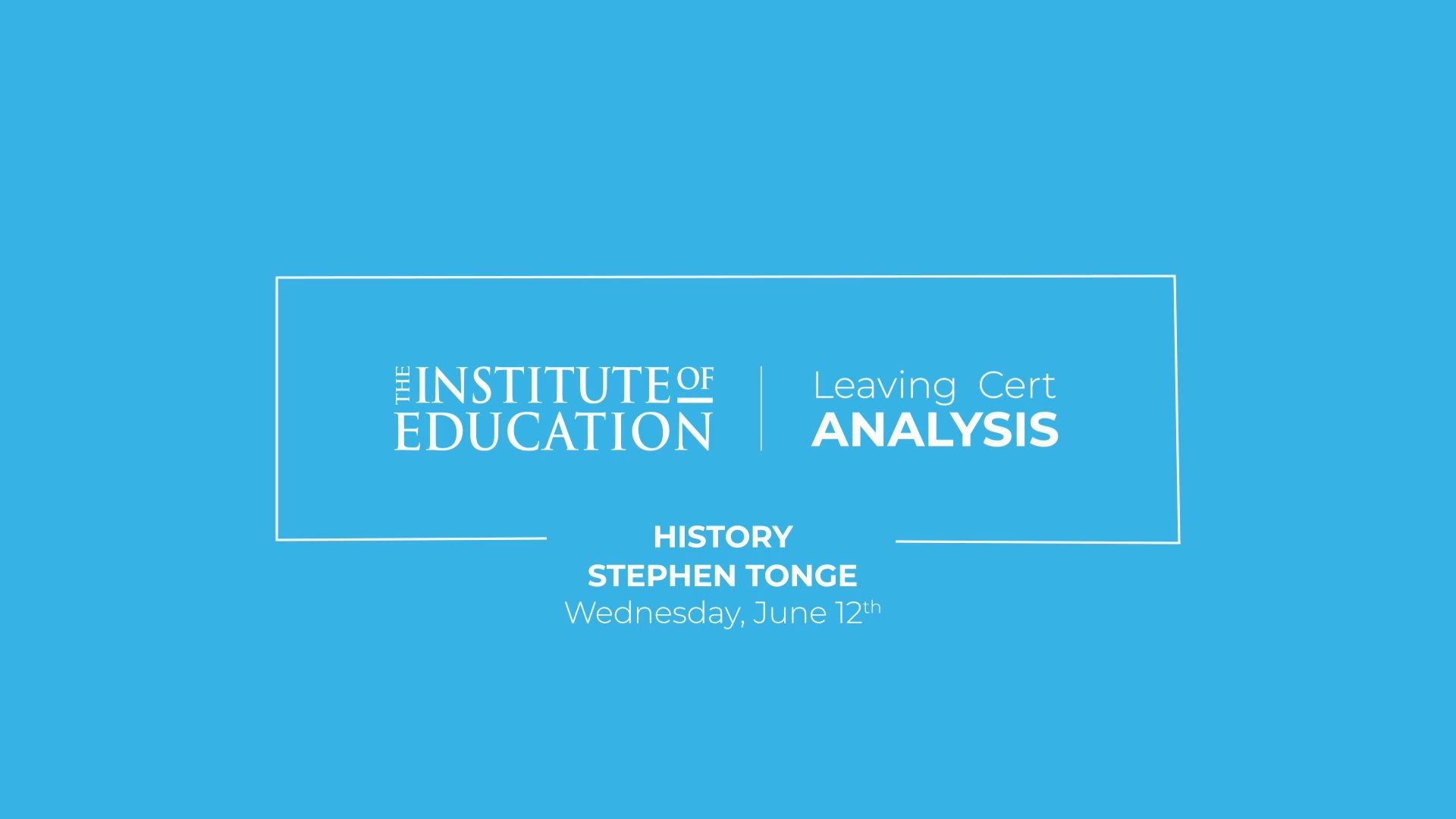Reaction to 2024 Leaving Certificate History (Higher Level) by Stephen Tonge, History teacher at The Institute of Education.
- Students that focused purely on case studies will be challenged by trickier questions that needed them to add greater context.
- Those who prepared a broad range of topics will find some very manageable questions.
Students would have started this paper with a positive mindset as the much-anticipated Stalin’s show trials made their appearance in Section 1: Documents-Based Question. The questions, particularly 2. and 3., were straightforward. This meant that students would be feeling secure as they ventured into Section 2: Ireland.
The History course is extensive, and students often need to prioritize sections. Those who did Topic 2: Political and Social Reform 1870-1914 will have found good questions that covered everything. Topic 3 on Sovereignty and Partition 1912-1949 will find a mix of the familiar and the novel. Question 1 was a very good question but required students to cover a vast array of material. Similarly Question 3 drew together several areas around the central figure of de Valera, asking students to assess his successes and failures between 1932-1948. While manageable, students needed to think on their feet and adapt their knowledge of events relating to the consolidation of state, economic policy and foreign policy around a key personality. This would have been different to what they expected, but those with very good knowledge of the topic could have adapted well. The fourth question on the Eucharistic congress will be lovely and familiar to those who have gone back through previous papers as it regularly appears.
Topic 5 on Northern Ireland, 1949 to 1993 introduced a few stings in the tail. Question 1 on the leadership of Lord Brookeborough may be unappealing as again it focuses on an individual rather than events, which is not how many students and teachers tend to approach the course. Question 2 on the Coleraine University controversy starts comfortably but narrows its scope by specifying the effects of it and the Civil Rights movement on Derry. That being said, Question 3 on the Sunningdale agreement and Anglo-Irish Agreement was pleasingly accessible to those who prepared that material.
In Section 3, Topic 6: The United States and the World (1945-1989) would be the focus of most students’ attention. Many students will be upset to see no questions on economy, Johnson or Vietnam. Those who had sought to streamline their revision would find this section very restrictive. Question 1 followed the trend of centering on a key personality and thus demanded students to think on their feet and recontextualize the material. Question 2 was a case study with the added sting of necessitating an evaluation into the wider topic. Question 3 was very nice for students who prepared the feminist movement as the “and/or” qualification in the question allowed them the ability to dictate the scope of their response. In contrast Question 4’s insistence on including both the moon landing AND Star Wars (the RADAR defense system) might break a few hearts. In the syllabus Star Wars is listed as “Foreign Policy” and so its inclusion with the moon landing is notably out of context.
The paper was manageable but definitely challenging as students had to contend with questions that were unfamiliar.

